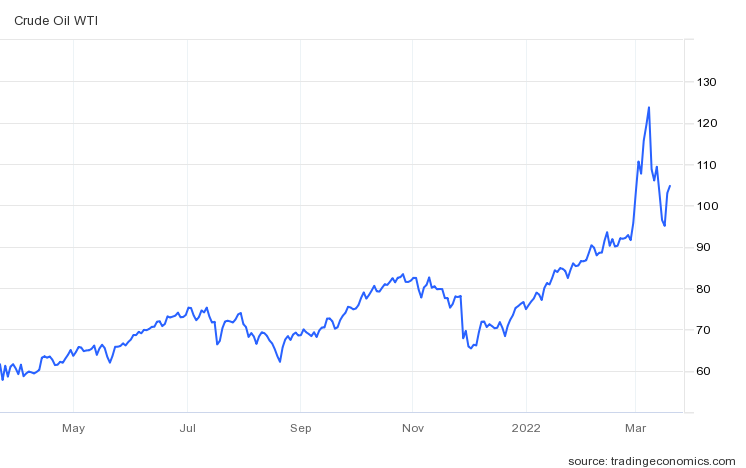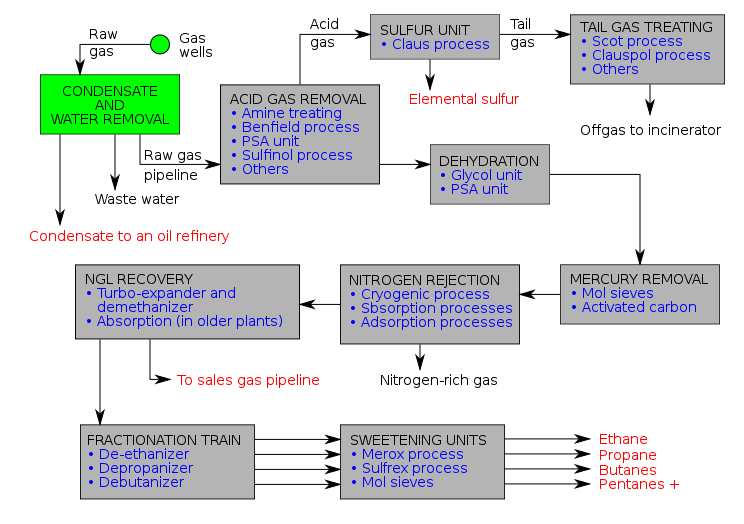Hi buddies!
It's been a couple of days away! My research work has been absolutely demanding of late! I'll get right to blogging about a topic that's been on my mind for some days now. The world continues to see its fair share of wars and the subsequent spike in oil prices. The conflict between Ukraine and Russia is the latest one to make headlines in the mainstream media.

Natural gas drilling rig; Source; License
The current continued and volatile rise in the price of oil and its various parts, together with the increase in global inflation, has impacted our daily needs, especially energy consumption. WTI crude oil futures were steady around $105 a barrel on Friday, after rising 8% in the previous session as ongoing peace talks between Russia and Ukraine failed to make significant progress. raising fears of further sanctions and prolonged oil supply disruptions.

Crude Oil Price as at 18th March, 2022 ; Source
Natural gas is a major source of energy in Europe and North America because it is used to heat homes and other things. This blog takes a quick look at the natural gas production process.
Natural gas mainly contains methane (CH4) and certain amounts of other hydrocarbons and was formed millions of years ago when dead organisms sank to the ocean floor and were buried under sedimentary rocks. Under intense heat and pressure, these organisms undergo a transformation in which they turn into gas over time.
It is found beneath rocks called reservoirs that have small gaps called 'pores' that allow them to hold water, natural gas, and sometimes oil. Natural gas is trapped underground by an impermeable rock called 'Caprock' and stays there until it is extracted.
You may be interested in knowing that natural gas can be classified as either wet or dry gas. Dry gas is basically a gas containing mainly methane while wet gas contains compounds such as ethane, methane, and butane. These natural gas liquids (NGLs), i.e. ethane, propane, butane, and pentane, can be separated and sold individually for different uses, such as refrigerants, and also to produce plastics.

Source ; Public Domain
Conventional natural gas can be extracted by drilling wells. Unconventional forms of natural gas such as shale gas, sour gas, tight gas, and coal bed methane all have specific extraction techniques. Natural gas can also be found in oil reservoirs and is sometimes extracted with oil. This type of natural gas is known as a Associated gas' that was often flared or burned to waste a few decades ago. However, engineers have found a way to capture and use this gas.
As soon as it is extracted, the natural gas is sent through small pipes called gathering lines to processing plants, where it is separated into various hydrocarbons and liquids from the purely natural gas to produce what is termed ‘Pipeline Quality Dry Natural Gas’ before it can be transported. Gas treatment consists of four main steps to remove various impurities:
-> Oil and Condensate removal
-> Water removal
-> Separation of natural gas liquids
-> Sulfur and Carbon dioxide removal

Schematic process flow diagram of a typical facility for processing raw natural gas to produce pipeline sales gas ; Source ; License
The gas is then transported through pipes called “feeders” to distribution centers or stored in tanks below underground for future use. In some cases, gas is liquefied to be transported in large tankers across the oceans, i.e. liquefied natural gas or LNG.
With its many vital applications, Natural gas is mainly used for domestic and industrial heating, electricity generation, feedstock for fertilizers and hydrogen fuel cells, and it can also be compressed and used to power vehicles. transportation by other chemical processes. The development of natural gas, especially in the United States, has increased due to technological advances in horizontal drilling and hydraulic fracturing.
When natural gas is burned, fewer greenhouse gases and air pollutants are released than other fossil fuels. When used to generate electricity, it produces about half of carbon emissions. Although it produces fewer emissions, natural gas is still a source of CO2. Furthermore, methane is also a potent greenhouse gas thought to have an impact almost 24 times that of CO2.

The effects of warming (called radiative forcing) of long-lived greenhouse gases have nearly doubled in 40 years, with carbon dioxide and methane the main causes of global warming ; Source ; License
To conclude this blog, we should all be aware that during extraction and transportation, natural gas can escape into the atmosphere and contribute to climate change. Leakage of this gas is also dangerous to communities that may be nearby because it is colorless, odorless, highly toxic, and highly explosive.
We all hope the conflict can come to an end soon and at least see some normalcy return to world trade, economics, and affairs. Till I come across your feed again, remain safe y'all!
Want to do some extra reading? Check out these sources:
Natural Gas
Extracting crude oil and natural gas
Natural gas explained
Natural gas
Posted from HypeTurf



